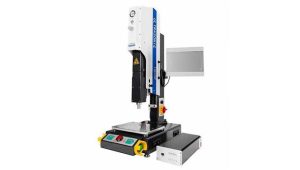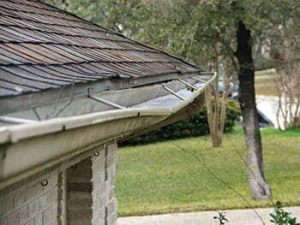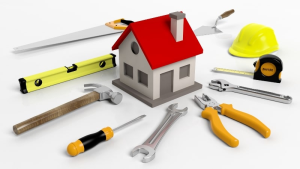A handyperson can help you with a variety of tasks. Some services may require a specific license, so it’s important to check your state laws before starting.
Drywall: Installing new drywall or repairing damaged walls is a common request for handymen. They also have the skills to finish woodworking projects like building shelves and cabinet doors. Contact Emerald City Handyman of Naperville now!

The plumbing skillset of a handyman is broad, allowing them to tackle a variety of repairs and renovations. From a leaky faucet to a malfunctioning toilet, handymen can quickly fix most common issues and prevent them from getting worse.
A licensed plumber has additional training and experience that allows them to perform more complex plumbing services, like installing new fixtures or repairing significant leaks. Licensed plumbers also have a higher level of knowledge about local codes and regulations, which is crucial for ensuring that the work they do is safe and up to code.
Many handymen are trained as a jack-of-all-trades, which is why they have such a wide range of skillsets. This makes them a convenient one-stop shop for homeowners who need help with a variety of home repair projects. From fixing a leaky faucet to painting touchups, handymen can get the job done and make your house look and function its best.
For property managers, hiring a handyman through Amenify is an efficient way to address maintenance requests from tenants. Keeping a handyman on staff helps prevent issues from building up and maintaining the quality of the property, saving money in the long run. Before hiring a handyman, it is important to assess the scope of each project and discuss the terms of service. This will ensure that the professional you hire is fully capable of completing the task at hand and that all expectations are aligned.
When choosing a handyman, be sure to review their previous work and ask for referrals from friends or family members. It is also helpful to review their cancellation and refund policies. Lastly, be sure to clear any workspaces that might block their access to the area in which they need to work.
Handyman are a valuable asset to any home improvement or construction company. Their wide range of skill sets allow them to efficiently tackle a variety of tasks and can help save time and money by eliminating the need for homeowners or property managers to call in multiple specialists for each job.
Electrical
While complex electrical work like rewiring or installing new outlets should be handled by a professional electrician, handymen often have the skills to perform basic electrical services. These might include fixing faulty appliances, resetting a circuit breaker, or setting up new light fixtures and ceiling fans. These handymen can also offer homeowners surge protection, a service that protects electronics and appliances against damaging electrical surges.
Plumbing work is another common service that handymen offer. These professionals can fix clogged drains, unclogged toilets, and leaking faucets. They may also clean gutters and eavestroughs, install sink faucets and garbage disposals, and replace shower heads. Depending on the scope of the work, plumbing repairs might require the use of power tools and hand tools. Handymen who specialize in plumbing can even handle more advanced repair and installation projects, such as replacing a bathtub or sink.
Many states require trade-specific licenses for contractors who perform certain types of maintenance and repair services. If a handyman does plumbing, electrical, or HVAC work without these licenses, insurance companies may refuse to pay out claims in the event of an accident or damage.
The good news is that most handymen do not need to have a license to perform a variety of maintenance and repair services. As long as they don’t provide electrical, plumbing, or HVAC services that connect to a home’s wiring or infrastructure, they can safely complete a wide range of repair and installation tasks.
Electrical and plumbing work that connects to a home’s infrastructure is dangerous for anyone who doesn’t have the proper training, knowledge, and licenses. When not done correctly, it can lead to fires, electrocution, or injuries. Those are risks that most homeowners don’t want to take.
If a handyman works on an electrical project and fails to follow safety protocols, they can leave behind scorched walls and floors, which could cause significant damage to the homeowner’s property. In addition, shoddy electrical work can create fire hazards that are both dangerous and costly to repair. In the worst case scenario, a fire caused by a handyman who didn’t have the proper licensing could lead to an insurance claim that is denied by the insurer.
Painting
A fresh coat of paint can breathe new life into any living space, elevating the room’s look and feel. Handymen offer comprehensive painting services for interior and exterior spaces, including thorough prep work to ensure a flawless finish. This may include filling in holes, sanding uneven surfaces, and applying primer. Handymen can also help with choosing colors and arranging furniture, making this service a great option for updating your home’s style.
The cost of painting a room depends on the size and complexity of the job. A larger room will require more paint and take longer to complete, which can significantly increase costs. It’s important to discuss your preferences and budget with your professional handyman, as they can recommend the best paint type and quality for your project. High-durability coatings often have a higher price tag but can save you money in the long run through their durability and longevity.
Handymen are also skilled at installing various types of trim and molding for a premium aesthetic in any room. They can help with crown molding installation, for example, which adds a touch of elegance and sophistication to any space. Crown molding is also a great way to frame a fireplace or highlight a staircase.
Unlike painting contractors, who specialize in creating beautiful finishes, Handymen focus on the overall repair and maintenance of a space. This means that Handymen may not be the best choice for large-scale remodeling projects, such as adding an extension or redoing a kitchen or bathroom. In these cases, a licensed and insured contractor should be hired.
While a Handyman can perform a variety of tasks, they are not licensed to perform certain home improvement jobs, such as plumbing or electrical work. They are also not qualified to replace or install gas appliances, as this work requires specialized training and knowledge of safety standards.
However, Handymen can still assist with these projects by providing expert advice and overseeing the work of qualified specialists. They can also refer homeowners to a licensed contractor when necessary. This allows homeowners to save time and energy while having peace of mind that the work is completed properly and to their satisfaction.
Flooring
If your floors are looking a little worse for wear, handymen can provide floor repair and installation services. They are also adept at laying new tile on walls and floors, giving your space an immediate aesthetic upgrade. Additionally, they can refresh grout, helping your tiled surfaces stay pristine, attractive, and well-maintained.
Carpentry: Handymen can fix a wide variety of woodworking issues. Does your favorite rocking chair have a persistently squeaky leg? They can diagnose and repair the problem, restoring that soothing creak. They are also skilled at more complex woodworking projects, like building custom bookcases or installing crown molding.
Handymen can also repair or install furniture, such as dressers and tables. They can even build custom pieces, like sheds and pergolas. However, they are not generally responsible for large scale home improvement or renovation projects, such as adding a room to a house or replacing a deck. For these larger tasks, it is typically necessary to hire a general contractor or construction professional.
When selecting a handyman, make sure they are licensed, insured, and experienced. Check online reviews and personal referrals to find a trustworthy professional. Discuss terms and costs before hiring. Ensure the scope of work is clearly defined and that it aligns with the quoted cost. Conduct a final inspection and walkthrough with the handyman to ensure that you are satisfied with the results. Also, be sure to ask about any warranties or guarantees provided by the professional. This will give you peace of mind that any issues that arise in the future will be covered.







